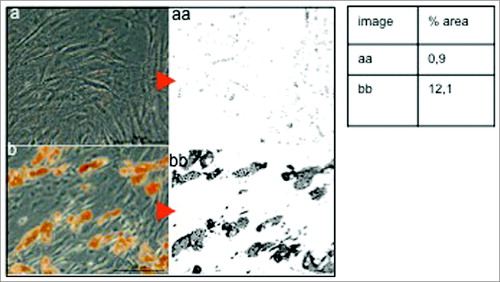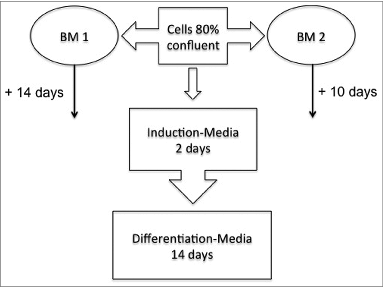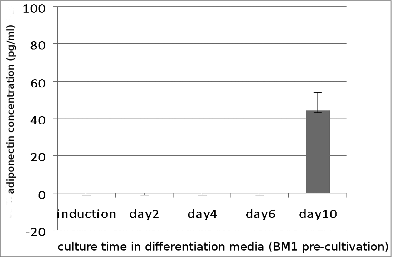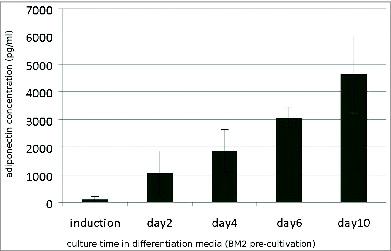Figures & data
Figure 2. (A) Cells cultured in BM 2 (right) show a higher proliferation rate during a 24-h cultivation period than cells cultivated in BM 1 (left). Each value represents the mean ± SD of triplicate values from 4 different ADSC-Preparations. Absorbance values obtained with medium alone (<0.02) were taken as the control and subsequently subtracted from all measurements. (B) Microscopic examination of ADSC cultured in 2 different culture media. 4 representative phase-contrast images are shown. left: ADSC were seeded at a density of 10.000 in DMEM/F12 medium (BM1) in 10 cm2 round tissue culture dishes and photographed 24 and 48 hours after seeding. Right: ADSC were seeded at a density of 10.000 in ECGM medium (BM2) in 10 cm2 round tissue culture dishes and photographed 24 and 48 hours after seeding.
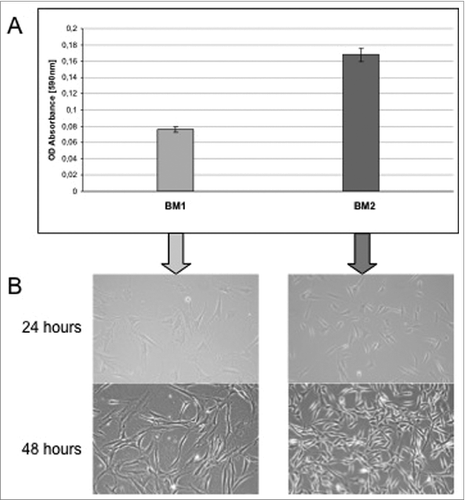
Figure 3. Quantification of Oil-red O positive surface areas representing the amount of mature Adipocytes. One representative example of ADCS submitted to either BM1 (A) or BM2 medium (B) simultaneously and subsequently differentiated using induction and differentiation regimen is shown. BM1 shows a coverage of 0.9 % in comparison to 12.1% with BM 2.
